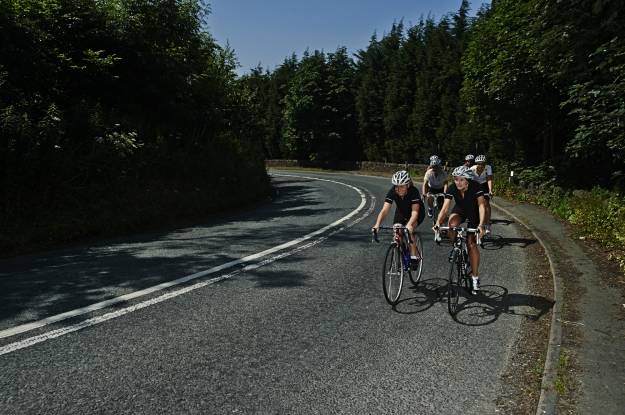Knowledge Level: Intermediate
With so much misunderstanding, misinformation and confusion about what winter training should comprise of, we profile our 12-week “Real Life” Winter Training Plan and explain why you should consider following it.
Can you summarise the plan?
The British Cycling 12-week Winter Training Plan is a departure away from the traditional, outdated and, for most riders, ineffective winter fare of trying to grind out slow miles under the misconception of “base training”. This plan is time effective, takes potential poor weather into consideration but will still lay the perfect foundations for a successful season.
What does a typical week look like?
There are usually two mid-week sessions, typically up to an hour in duration, which focus on maintaining some intensity in your training. As you might well be doing them before or after work, they’re suited to indoor trainers and are fully smart trainer compatible. They can also be easily adapted to the road.
You’ve then got a longer, building up to 4 hours over the 12-weeks, endurance focussed ride to do at the weekend. From Week 5 onwards this ride also includes some higher intensity efforts and even some sprints.
Finally, along with two rest days, are two sessions dedicated to strength training. A solid 12-week block, where you consistently manage two strength sessions per week, will not only benefit your cycling directly but will also help to protect you from injury and improve overall health, robustness and mobility.
Winter Strength Training for Cycling
How many hours will I need to do each week?
The volume of training is between 5-8 hours per week.
Is this enough and why should I maintain intensity? I thought the winter was all about big steady mileage?
You may hear about pros putting in big base miles but this is because of the huge volume of racing they’ve got ahead of them and, as they can be riding 30 hours a week or more, their training load can be developed through volume rather than intensity.
For riders who are juggling work, family and other commitments with their cycling, this sort of volume is totally unrealistic and so, to get the most out of your limited riding time, you’ll need to up the pace a bit.
Even if you’re targeting some big sportives or even a multi-day ride, it’ll still be nowhere near the volume of racing that pros are facing. Therefore, you shouldn’t try and mimic their approach to training.
Finally, consistency really counts. It’s far more effective to nail three focussed sessions each and every week and stay healthy than to binge train for a number of weeks, inevitably get ill and then repeat that cycle.
Winter Cycling Training Myth Buster
How fit do I need to be to start it?
To start the plan, you should ideally be riding three or four times a week, be familiar with structured training and be capable of riding for 90 minutes. If you have ridden solidly through the summer and autumn but maybe had a month of so off in October or November, it’d be ideal. Also, if you’ve let things slip until after the festive season, it’s the perfect way to rebuild your fitness.














